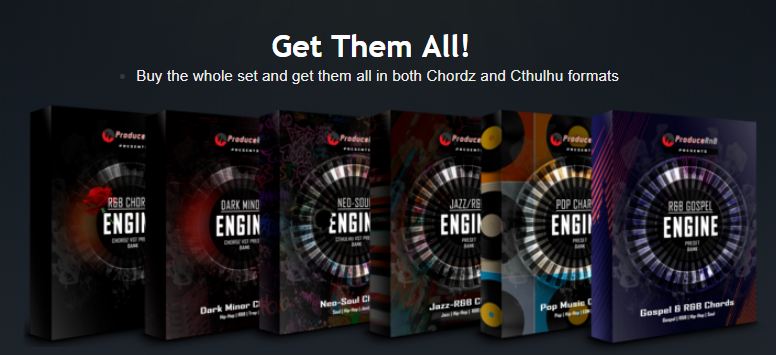

- #R&B CHORDZ ENGINE MAC TORRENT HOW TO#
- #R&B CHORDZ ENGINE MAC TORRENT SERIAL#
- #R&B CHORDZ ENGINE MAC TORRENT UPGRADE#
- #R&B CHORDZ ENGINE MAC TORRENT SOFTWARE#
Packages may also include extended code demonstrations (“demos”).

survival), if you wish to review the vignette for a package prior to installing and/or using it. Vignettes may also be accessed from the CRAN page for the package (e.g. You can also use the vignette("vignette-name") command to view a vignette (possibly specifying the name of the package in which the vignette resides, if the vignette name is not unique): for example, vignette("timedep") or vignette("timedep", package="survival") (which are, in this case, equivalent). vignette() is employed similarly, but displays a list of vignettes in text form. You can discover vignettes by accessing the help page for a package, or via the browseVignettes() function: the command browseVignettes() opens a list of vignettes from all of your installed packages in your browser, while browseVignettes(package=package-name) (e.g., browseVignettes(package="survival")) shows the vignettes, if any, for a particular package. Many packages include vignettes, which are discursive documents meant to illustrate and explain facilities in the package. Vignettes and Code Demonstrations: browseVignettes(), vignette() and demo() You can execute these examples in the current R session via the example() command: e.g., example(lm). Help pages for functions usually include a section with executable examples illustrating how the functions work. You may also use the help() function to access information about a package in your library - for example, help(package="MASS") - which displays an index of available help pages for the package along with some other information.

To obtain help for an object with a non-standard name (such as the help operator ?), the name must be quoted: for example, help('?') or ?"?". ), and must begin with a letter or a period. Standard names in R consist of upper- and lower-case letters, numerals ( 0-9), underscores ( _), and periods (. To access help for a function in a package that’s not currently loaded, specify in addition the name of the package: For example, to obtain documentation for the rlm() (robust linear model) function in the MASS package, help(rlm, package="MASS"). To access documentation for the standard lm (linear model) function, for example, enter the command help(lm) or help("lm"), or ?lm or ?"lm" (i.e., the quotes are optional). The help() function and ? help operator in R provide access to the documentation pages for R functions, data sets, and other objects, both for packages in the standard R distribution and for contributed packages. There are also specialized search engines for accessing information about R on the internet, and general internet search engines can also prove useful ( see below). R includes extensive facilities for accessing documentation and searching for help. Yes, the Chord Engine allows you to save individual chords or save the entire chord progression as a snapshot to be loaded at another time.Before asking others for help, it’s generally a good idea for you to try to help yourself. If you own Kontakt 6, you can of course also load The Chord Engine Genesis 2.0 into Kontakt 6.
#R&B CHORDZ ENGINE MAC TORRENT UPGRADE#
No purchase or upgrade from Kontakt 5 is necessary. You will download the FREE Kontakt 6 player to use this plugin. No purchase necessary.Ĭan I use this with the FREE Kontakt Player
#R&B CHORDZ ENGINE MAC TORRENT SOFTWARE#
The Chord Engine Genesis 2.0 will work in any DAW or music software accepting VSTs. Will the Chord Engine 2.0 Work in my software?
#R&B CHORDZ ENGINE MAC TORRENT SERIAL#
You will register your serial through Native Access, Native-Instrument's software manager. The Free Kontakt 6 player is a standard VST plugin that will run in any DAW. There is no additional purchase necessary. The Chord Engine Genesis 2.0 runs in the FREE Kontakt 6 player.
#R&B CHORDZ ENGINE MAC TORRENT HOW TO#
txt file in your order that explains how to install in detail. You can view the video above for a visual step-by-step guide. There is also a.


 0 kommentar(er)
0 kommentar(er)
